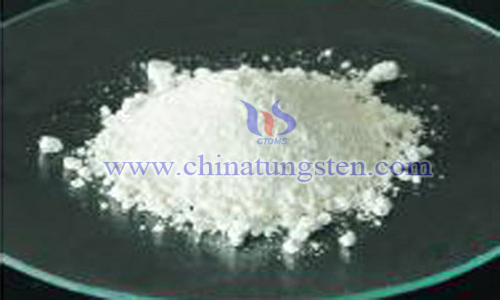Synthesis of Vanadium-free Titanium-tungsten Powder as SCR Catalyst
- Details
- Category: Tungsten Information
- Published on Tuesday, 04 June 2019 00:30
As energy consumption increases, a large amount of fossil fuels are consumed, resulting in an increase in the emission of nitrogen oxides, causing great damage to the environment. Therefore, NOx emission control under oxygen-rich conditions has become a research hotspot in the field of environmental catalysis and air pollution control technology.
Ammonia selective catalytic reduction (SCR) is considered to be one of the most effective methods for fixed source NOx elimination. The core issue is the development of catalysts. At present, the NH3-SCR catalyst for industrial application is mainly V2O5-WO3-TiO2. This type of catalyst exhibits a high NOx removal rate and good sulfur resistance at 350 to 400 °C.
However, there are still some problems in the actual use of the SCR catalyst, mainly because the precursor of the active component V2O5 is generally very toxic and has a toxic effect on the human body and the environment. Secondly, the high temperature aging characteristics of the catalyst are poor, and the dispersion of the active element or the active center is difficult to be improved. Therefore, a vanadium-free catalyst having excellent NOx removal effect and sulfur poisoning resistance over a wide temperature window is required.

Some scholars believe that the use of rare earth elements instead of vanadium can solve the problems of high temperature aging resistance and toxicity of SCR catalysts, and improve the activity and safety of the catalyst. The rare earth element may be a composite of one or more of lanthanum, cerium, lanthanum and cerium. The synthesis method of vanadium-free titanium-tungsten powder is:
1) Add anatase type nano titanium dioxide with a sufficient amount of water to form a 15% suspension;
2) 10-30 parts of water and monoethanolamine are stirred and dissolved, and when the temperature reaches 80-100 ° C, the compound added with tungsten is uniformly stirred, and all are dissolved and used;
3) 40-60 parts of water and citric acid are mixed and dissolved by stirring, and the compound of hydrazine is added. After completely dissolved, the hydrazine compound is further added, and after being completely dissolved, the hydrazine compound is added to prepare a mixture for use;
4) Stirring the suspension of step (1) and the solution of step (2) for 2-3 hours with stirring to obtain a slurry;
5) The slurry obtained in the step (4) is placed in an ultrasonic machine, ultrasonically immersed for 2-4 hours, and then the solution of the step (3) is added under stirring, and ultrasonic impregnation is continued for 2-4 hours; then, under stirring conditions. Adding manganese molybdenum nickel composite metal oxide (Mn-Mo-Ni-OX), and continuing ultrasonic impregnation for 2-4 hours;
6) After the end of the ultrasonication, take out and dry, then calcine in a mesh belt continuous drying kiln at a temperature of 400-700 ° C for 1-2 hours, and finally grind into a powder of 80-100 mesh to obtain a vanadium-free rare earth titanium tungsten powder. To replace the traditional titanium vanadium tungsten SCR catalyst.
The SCR catalyst based on vanadium-free rare earth titanium tungsten powder has the characteristics of high temperature aging resistance and long service life. The specific surface area of the active layer can be maintained relatively stable at 650 ° C, thereby maintaining catalyst activity and prolonging the life of the catalyst. The traditional SCR catalyst has a lifetime of only about 15,000 hours, while the new catalyst has a service life of more than 25,000 hours.
- Tungsten Manufacturer & Supplier, Chinatungsten Online: www.chinatungsten.com
- Tungsten News & Prices of China Tungsten Industry Association: www.ctia.com.cn
- Molybdenum News & Price: news.molybdenum.com.cn
- Tel.: 86 592 5129696; Fax: 86 592 5129797; Email: sales@chinatungsten.com



 sales@chinatungsten.com
sales@chinatungsten.com